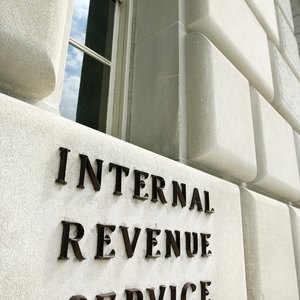
Employers, trustees and plan administrators use the Internal Revenue Service Form 1099-R to report withdrawals in excess of $10 from pensions, retirement plans and profit plans such as designated Roth accounts and individual retirement accounts. The form includes information about the recipient of the distribution, the gross distribution amount, the taxable amount of the distribution and federal income tax withheld.
If any of the information is incorrect, action must be taken to fix the error. Filers correct errors on Form 1099-R by filing a corrected 1099-R with the IRS.
Claiming and Processing Corrections
Employers and other 1099-R filers, like plan administrators and trustees, must send copies of the corrected form to the distribution recipient. A correction to Form 1099-R is transmitted by completing the corrected 1096 form instructions and sending both forms to the appropriate IRS Service Center. The IRS can assess penalties for erroneous reporting, including those reported on 1099-Rs; among the types of errors that are subject to penalty are inaccurate information about distribution amounts or incomplete data about the recipient.
Read More: Do You Get a 1099-R for Money You Rolled Over?
Impact of Errors
Among the common filing errors are mistakes in the gross distribution amount, incomplete or inaccurate information regarding the recipient or incorrect distribution codes. When a 1099-R contains an error in the distribution amount, the recipient risks underreporting or overreporting income.
For example, if the distribution was $5,000, but the amount reported on the form omitted a zero, resulting in a reported distribution of $500, the recipient will underreport income by $4,500. On the other hand, if a number is transposed and the form reports a distribution of $5,200 rather than $2,500, the recipient will overreport $2,700 in income.
Correcting the Errors
Form 1099-R filers must correct errors as soon as they are discovered by sending an amended form containing the correct information, together with all other information previously reported. In some cases, it may be necessary to send both a corrected Form 1099-R and a new Form 1099-R.
For example, if you reported that a direct rollover is not taxable but later discover that part of the direct rollover consists of required minimum distributions, you must file a corrected Form 1099-R reporting the eligible rollover distribution as the direct rollover and file another new Form 1099-R reporting the required minimum distribution as if it had been distributed to the recipient.
Filing Your Amended 1099-R
If you have filed a personal income tax return based on an erroneous Form 1099-R, you may also need to amend your income tax return, because the IRS uses the code in 1099-R box 7 to determine if the distribution is properly reported. If the distribution has been incorrectly reported, the IRS may improperly make changes to the taxpayer's taxes. To guard against an improper change, file the same personal income tax form with the IRS containing the correct information and check the box indicating it is an amended tax return.
References
Writer Bio
Trudie Longren began writing in 2008 for legal publications, including the "American Journal of Criminal Law." She has served as a classroom teacher and legal writing professor. Longren holds a bachelor's degree in international politics, a Juris Doctor and an LL.M. in human rights. She also speaks Spanish and French.

